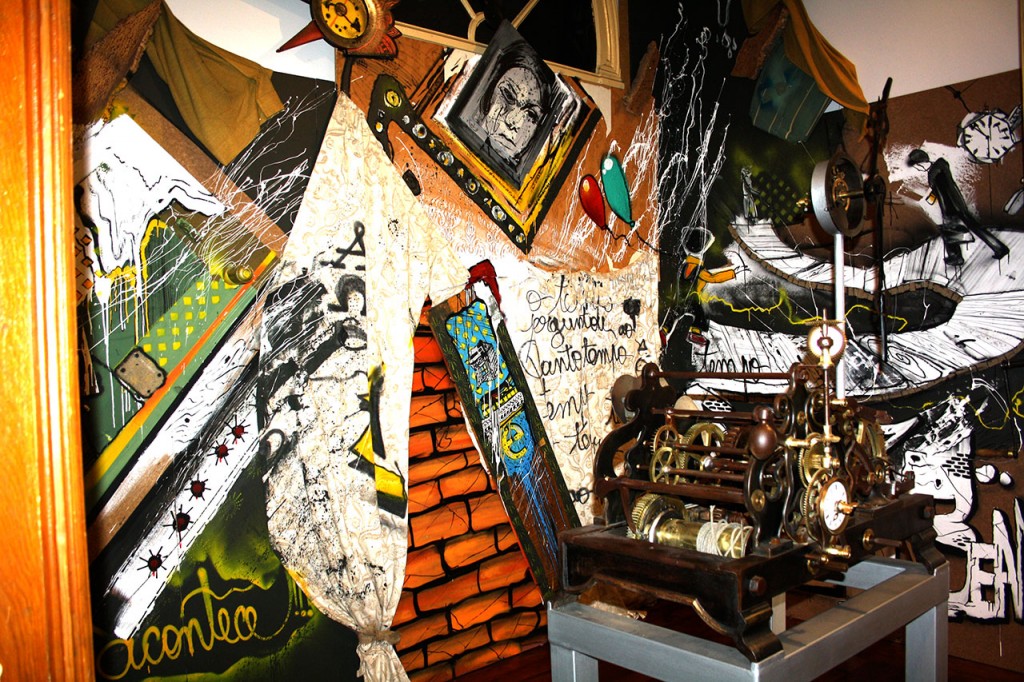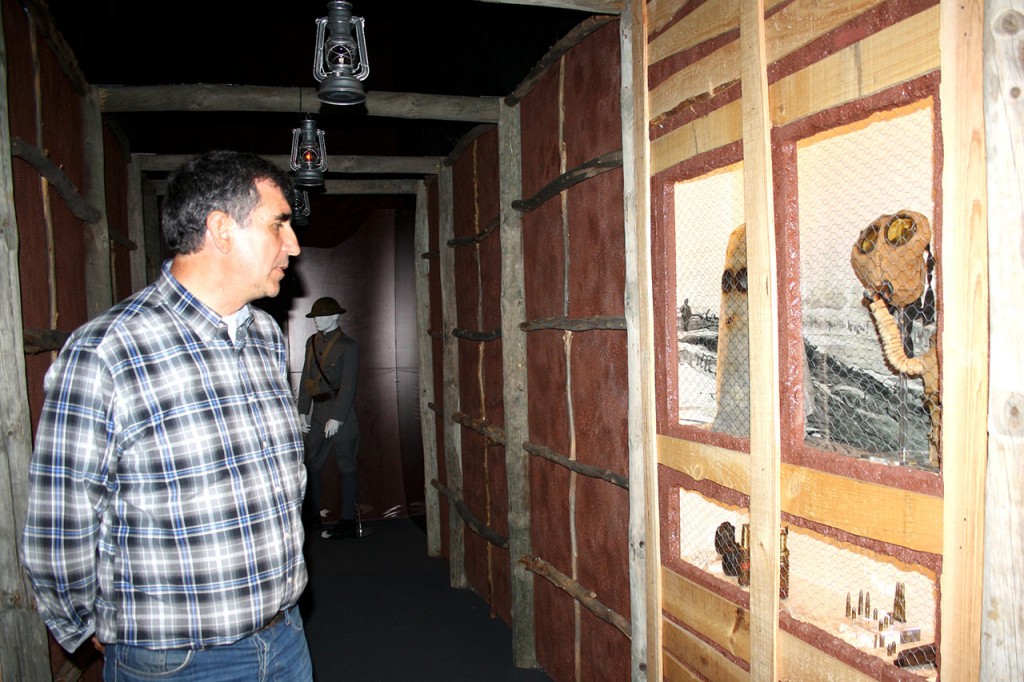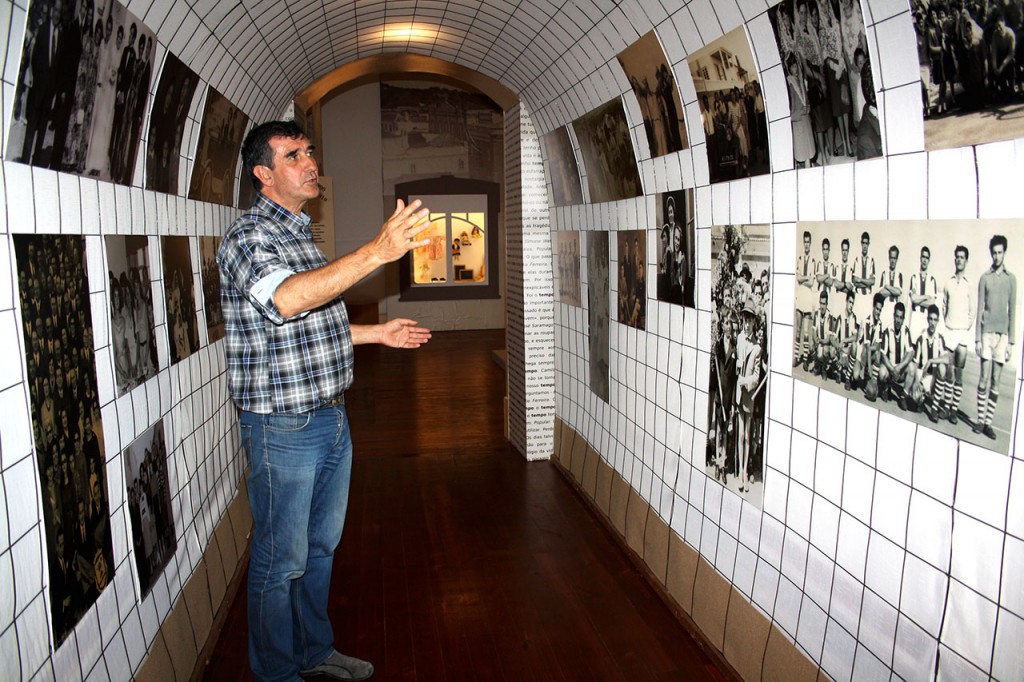 There are many new pieces, including equipment used by Portuguese soldiers in World War I, and there are also new rooms to see and new ways to tell the story of São Brás de Alportel, which include graffiti representation and installations by students of the course. of Visual Arts at the University of Algarve.
There are many new pieces, including equipment used by Portuguese soldiers in World War I, and there are also new rooms to see and new ways to tell the story of São Brás de Alportel, which include graffiti representation and installations by students of the course. of Visual Arts at the University of Algarve.
Since last week, the Museu do Traje has been showing the long-term exhibition (2 years) «Engrenagens do Tempo – Social vision of 30 years of the history of São Brás de Alportel: 1900-1930», which presents the social and political reality that framed the birth of this municipality 102 years ago.
To tell local history, the Museu do Traje had to cross it with national history and also with the international situation of that time. “We started in the calm years of the monarchy and went through the republican revolution. In 1914 we have the elevation to county and right there begins World War I, which Portugal will enter a little later. And then we have the great explosion of the 20s to 30s, after the war, which is a period that ends in a dictatorship," he explained to Sul Informação São Brasense museum director Emanuel Sancho.
São Brás de Alportel, an eminently republican land, also contributed to the Portuguese war effort. "From here about a hundred soldiers left, who went to fight in France, some of whom ended up dying there," he added.
Those who returned brought with them the most diverse type of material, part of which can now be seen in this exhibition. In the corridor dedicated to this period of history, in addition to the complete uniforms worn by the São Brasenses military who were part of the Portuguese Expeditionary Corps, there are weapons and medical supplies, among other relics from the past.

This is just one of the new areas created for this exhibition, which becomes part of the Museu do Traje visitation experience. Anyone visiting the museum space of the village of São Brás de Alportel and heading to this new area will have no difficulty in noticing that they are in a renovated wing, since, in the first room, they immediately see the walls painted by two graffiti artists, the Algarve street performers Sen and Bean.
“This exhibition has a peaceful, almost normal chronology. What happened, interesting and interesting, when setting up this exhibition, was that we came across, at one point, around 12 contemporary plastic artists: graffiti staff and students from the arts course at UAlg», said Emanuel Sancho.
The interventions of these creators introduced an “exciting, worrying” component and raised a series of “problems”” in a narrative that was “calm, chronological and consensual”. «It is, in part, from this confrontation that the exhibition lives», summarizes the director of the Museu do Traje.
This unusual relationship between the museological aspect and street art and, in the case of a museum dedicated to history, with contemporary artists, is unusual. But the Museu do Traje was not “afraid” to introduce other ways of presenting its message.
«We were always involved in a movement, let's say, marginal, of great museology, the so-called, socio-museology. This current defends the primacy of people, before valuing objects. We have a piece, but we are more interested in who made it or who used it than the typology or evolution of the object», he framed.
Bearing this philosophy in mind, Emanuel Sancho admitted that the museum's team has felt, over the last few exhibitions, "in a way annoyed by the consensual narrative that we transmit". «We would like to disturb the visitor, to surprise him. We want you to go to some rooms and ask yourself: what's going on here? Not just reading a "story", but to be agitated and questioned», he said.
Crossing with contemporary arts was seen as “a good opportunity” to achieve this goal. «This was a meeting that had been desired for some time, which I think we will deepen over time», believes Emanuel Sancho.

And those who visit the new exhibition at the Museu do Traje feel this challenge. The trip to the past suggested by the São Brás de Alportel museum has the gift of surprising, on several occasions, not only for the introduction of contemporary art, but also for the possibility of interacting with some of the objects on display.
«Engrenagens do Tempo – Social vision of 30 years of the history of São Brás de Alportel: 1900-1930» was designed for the centenary of the elevation of São Brás de Alportel to a municipality, which began to be celebrated in 2014, but ended up only being opened about two years later. Something that had to do, from the outset, with the size of the museum's team, which was intimately involved in the organization of the celebrations for the anniversary, but also with the chosen creation process.
“We have a very small team and we cannot set up an exhibition from one week to the next. This show, in fact, took about a year to build, which led us to reflect on whether what matters most is the creation process or the exhibition itself. Do we have the right to present something completely constructed? Wouldn't the visitor appreciate participating in the process and giving his opinion?”, asked the director of the Museu do Traje de São Brás.
The option, in this case, was to involve the visitors and the population in the process, albeit “almost involuntarily”. “Throughout this year of construction, room by room – we were opening, almost every month, a new room –, we began to have the local population visit the museum to learn about the evolution. And as the exhibition integrates a lot of photography of local families, the evolution of the land and buildings that have already disappeared, this was exciting and immersive for people».
In other words, the São Brasense museological space «gained a number of new collaborators». These people ended up bringing, themselves, material, such as “rare or even completely unknown photographs” and giving a helping hand, like a soldier who helped to design the room dedicated to World War I.


















Comments